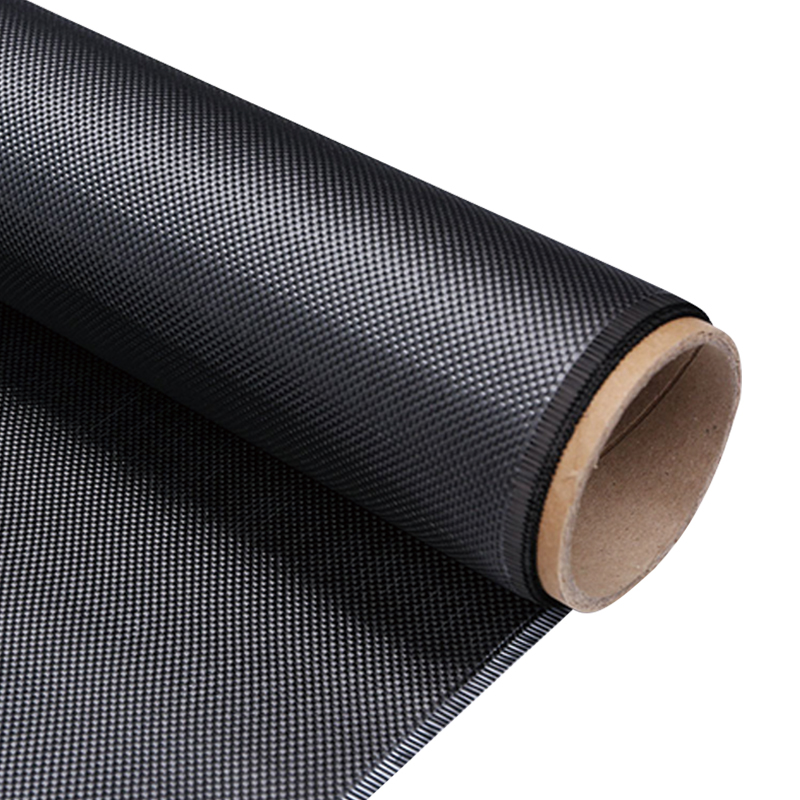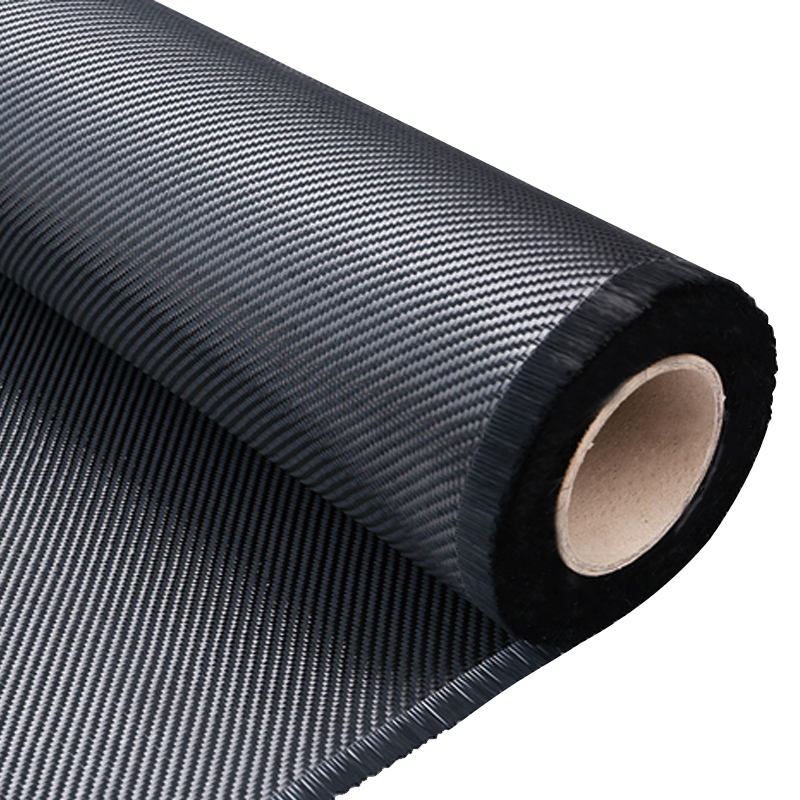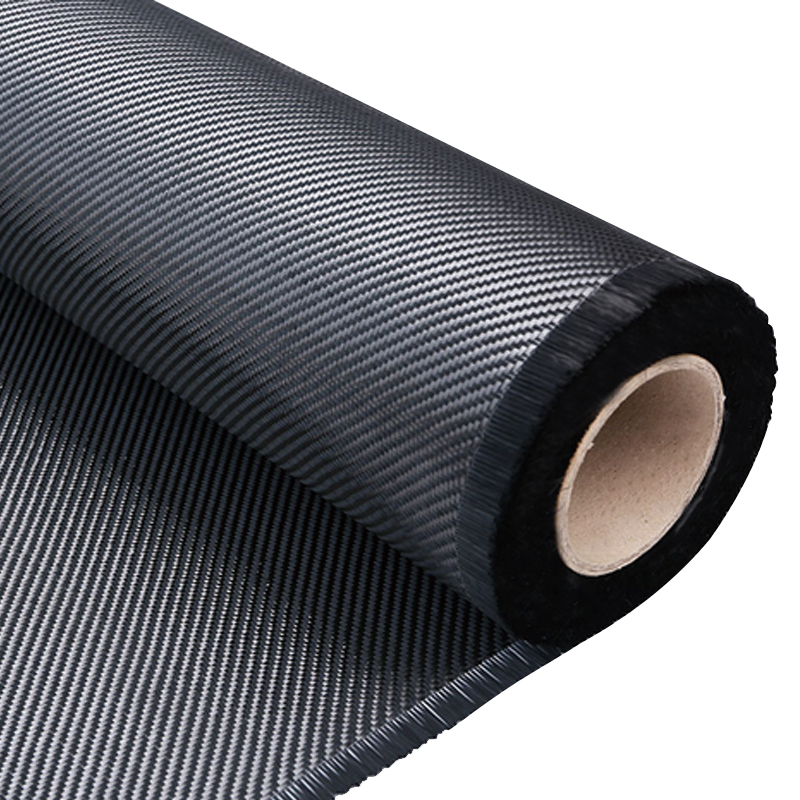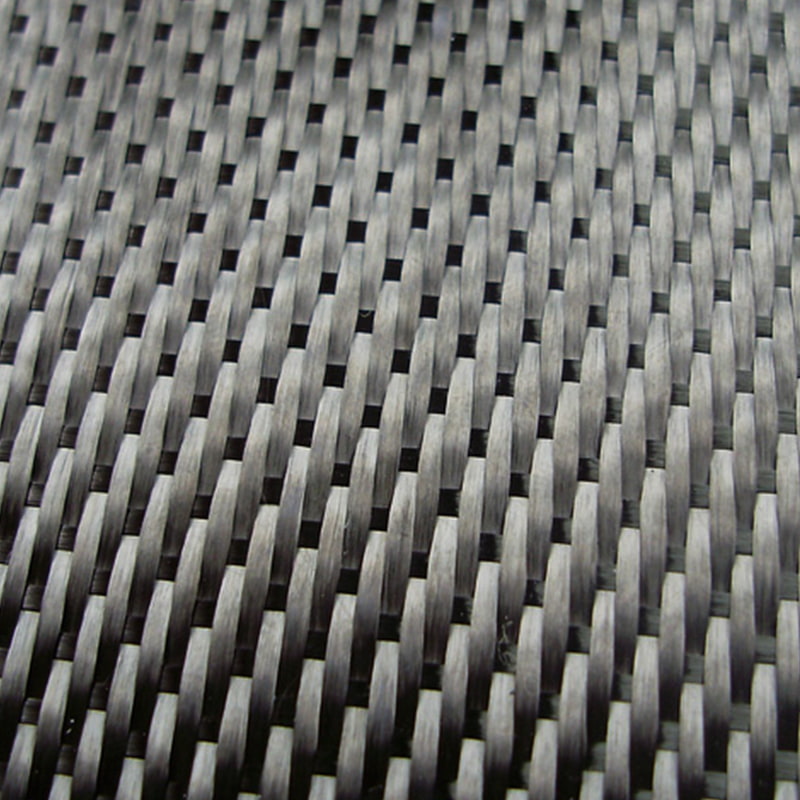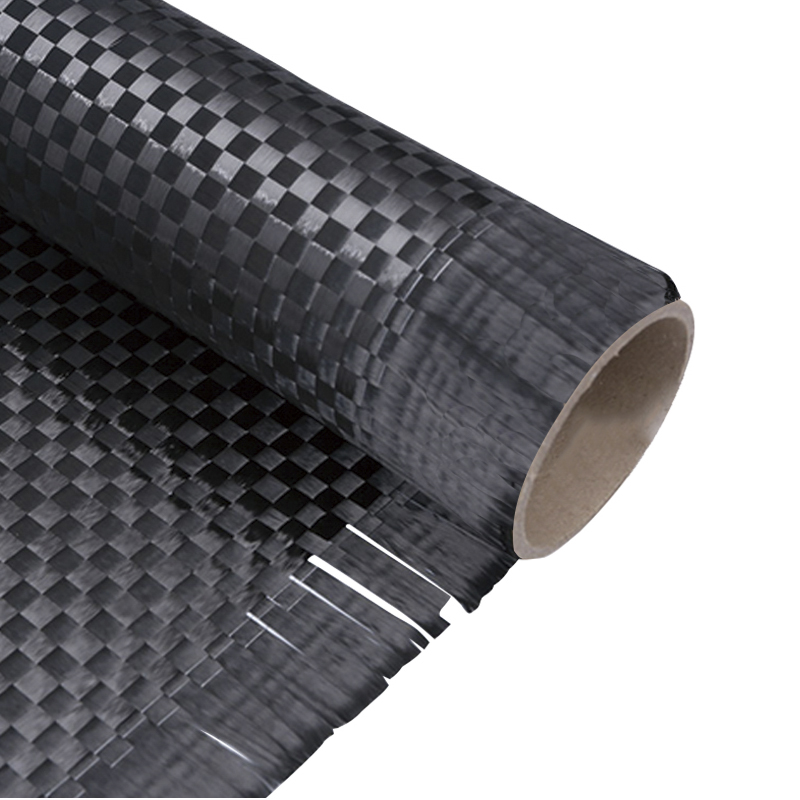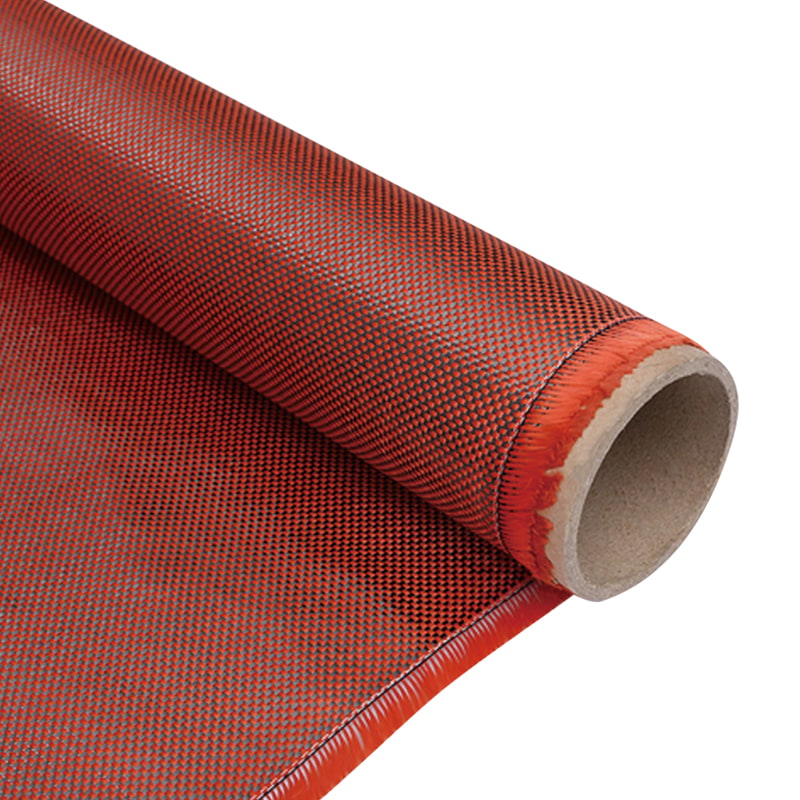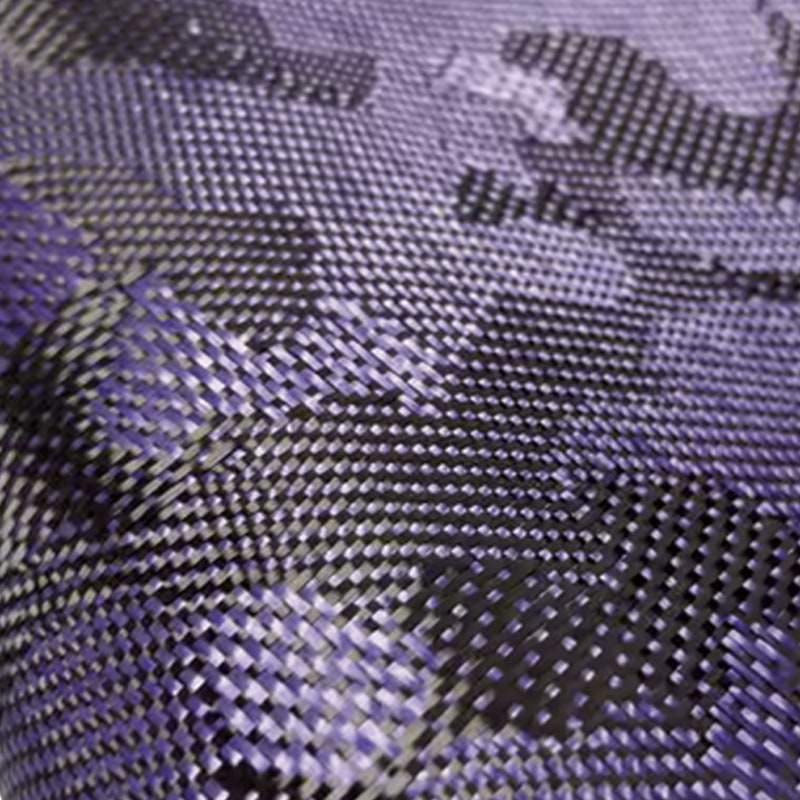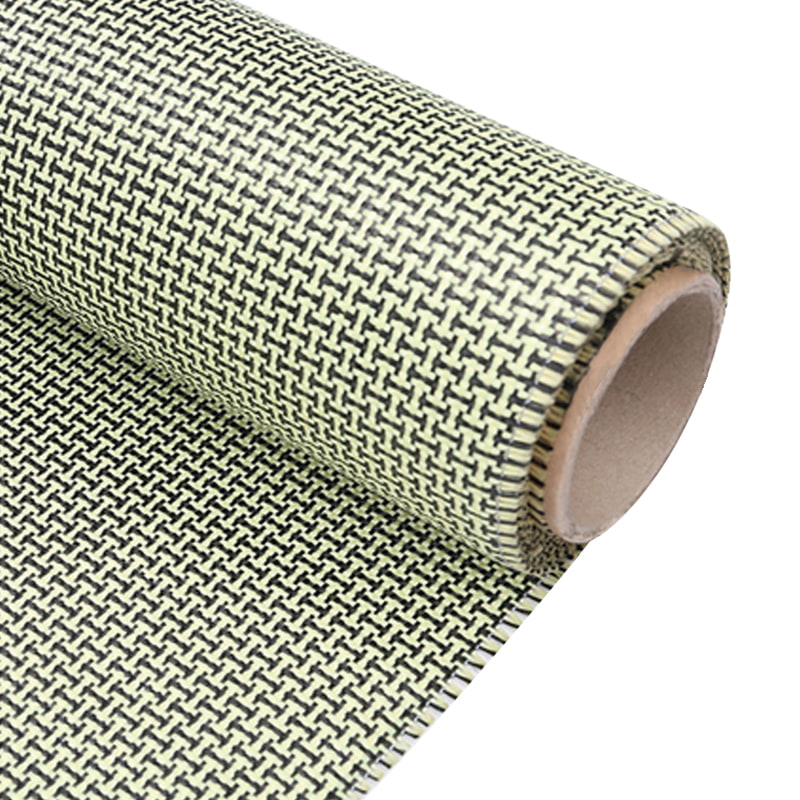I. The Cornerstone of High-Performance Materials
In the vast landscape of modern material science, woven carbon fabric undoubtedly holds a pivotal position. It is not merely a single material but the intelligent fusion of high-performance carbon fibers with sophisticated weaving techniques. Essentially, it is a flexible sheet-like structure formed by interweaving thousands of hair-thin carbon fibers through specific weaving patterns, such as plain, twill, or satin weaves. This unique structure endows it with excellent mechanical properties in multiple directions, making it a core component in the field of composite materials.
Abrasion-Resistant And High-Temperature-Resistant Carbon Fiber Twill Weave Fabric
The fundamental value that makes woven carbon fabric indispensable in modern engineering lies in its perfect combination of lightweight, high strength, and high designability. Compared to traditional metal materials, carbon fiber fabric can significantly reduce structural weight while offering strength and stiffness that often surpass metals. This high specific strength and specific modulus allow designers and engineers to overcome the limitations of conventional materials, creating more efficient, energy-saving, and superior-performing products. Crucially, by selecting different types of carbon fibers, weaving patterns, and subsequent resin impregnation and curing processes, the final composite material's properties can be precisely tuned to meet various complex and stringent application requirements.
The development history of carbon fiber composites itself is a microcosm of continuous advancement in material science and engineering technology. From its initial exploratory applications in aerospace to its widespread penetration today into industries such as automotive, sports, energy, and even medical fields, weaving technology has played a crucial role. It not only enhances the overall structural stability of carbon fibers but also improves their processability and formability, enabling carbon fiber composites to adapt to the complex geometries and mechanical demands of diverse products in various forms, laying a solid foundation for the design and manufacturing of high-performance structures.
II. Micro and Macro Structure of Woven Carbon Fabric
The exceptional performance of woven carbon fabric fundamentally stems from its unique constituent material—carbon fiber—and the ingenious weaving processes that bind these fibers together. Understanding both is key to delving into this high-performance material.
2.1 Carbon Fiber Filaments:
Carbon fiber is the bedrock of woven carbon fabric, a high-strength, high-modulus fiber with a carbon content exceeding 95%. Based on the precursor material, carbon fibers are primarily categorized into polyacrylonitrile (PAN)-based carbon fiber and pitch-based carbon fiber, among others. PAN-based carbon fiber is the most widely used type in the market due to its excellent mechanical properties and relatively mature production processes. Pitch-based carbon fiber, on the other hand, exhibits unique advantages in specific applications, especially where high modulus and thermal conductivity are required.
Regardless of type, carbon fibers possess a series of critical performance indicators: extremely high tensile strength (often several times that of steel), outstanding tensile modulus (i.e., stiffness), and very low density. These characteristics make carbon fiber an ideal choice for achieving structural lightweighting and high performance. Before weaving, thousands of individual filaments are gathered into bundles, forming what is commonly known as carbon fiber tow, which serves as the basic unit for subsequent weaving processes.
2.2 Weaving Structure:
The weaving process is crucial for imparting specific structures and properties to carbon fiber fabrics. It involves arranging carbon fiber tows in specific warp and weft interweaving patterns, thereby forming a fabric with directionality and integrity.
2.2.1 Weaving Principle:
Weaving is essentially the process of warp yarns (longitudinal fiber tows) and weft yarns (transverse fiber tows) interlacing according to a predetermined pattern. This interweaving not only secures loose fiber tows together but, more importantly, determines the fabric's mechanical response characteristics, drapeability, and the mechanical properties of the final composite material. Different types of looms, such as traditional shuttle looms, rapier looms, or air-jet looms, can achieve varying weaving efficiencies and fabric widths.
2.2.2 Common Weave Types and Their Structural Characteristics:
- Plain Weave: This is the simplest and most common weaving method, where warp and weft yarns interlace over and under each other alternately. Plain weave fabrics have a tight structure, high stability, and are resistant to deformation, but are relatively stiff with moderate drapeability. They are often used in applications requiring uniform stress distribution and good dimensional stability.
- Twill Weave: Twill weave fabrics are characterized by diagonal lines formed by the interlacing points, where a warp or weft yarn floats over or under multiple yarns. This structure gives the fabric better drapeability and softness, making it easier to conform to complex curved surfaces while maintaining good strength.
- Satin Weave: Satin weave fabrics have the fewest interlacing points, with warp or weft yarns floating for longer distances on the surface. This results in a very smooth, aesthetically pleasing surface with excellent drapeability and softness, making it ideal for forming complex shapes. However, due to fewer interlacing points, its shear strength may be slightly lower than plain and twill weaves.
- Multiaxial Fabrics: This is a more complex weaving structure that, in addition to 0° and 90° fibers, can include fiber layers at ±45° or other angles, secured by stitching. Multiaxial fabrics allow precise control over fiber orientation, enabling anisotropic customization to optimize mechanical properties in specific directions, and are widely used in large structural components.
- 3D Weaving: An advanced technology that allows for the direct weaving of preforms with complex three-dimensional shapes. This significantly enhances the integrity and delamination resistance of composite materials, particularly suitable for structures requiring high strength and toughness.
2.3 Influence of Fabric Parameters on Performance:
- Fiber Density (Warp and Weft Density): The number of yarns per unit length in the warp and weft directions directly affects the fabric's tightness, weight, and mechanical properties.
- Yarn Count (Linear Density): The thickness of the individual fiber tows influences the fabric's overall thickness, stiffness, and resin absorption capacity.
- Weave Angle and Layup Direction: For composite laminates, the orientation of each fabric layer relative to the principal load direction is critical in determining the overall mechanical response of the component.
III. Manufacturing Process and Quality Control
The transformation of woven carbon fabric from raw materials to a finished product relies on precise manufacturing processes and stringent quality control. These stages ensure that the fabric meets the demands of high-performance applications.
3.1 Manufacturing Process:
The production of woven carbon fabric is a multi-step process, each step being critical to the final product's performance:
- Preparation and Untwisting of Carbon Fiber Tows: The manufacturing process begins with the preparation of carbon fiber tows. These tows may need to be untwisted before weaving to ensure that the fibers spread smoothly during the weaving process, preventing tangling or breakage, thereby guaranteeing the fabric's uniformity and integrity.
- Weaving Equipment and Technology: Carbon fiber tows are fed into specialized weaving equipment.
- Traditional looms (e.g., shuttle looms, rapier looms) can produce two-dimensional plain, twill, satin, and other weaves.
- Multiaxial looms can produce fabrics containing fiber layers in multiple directions (e.g., 0°, 90°, ±45°), connected by stitching. This significantly improves fiber utilization efficiency and the mechanical properties of the composite material.
- 3D looms are more advanced technologies that can directly weave preforms with complex three-dimensional shapes, significantly enhancing the overall integrity and delamination resistance of composite materials, especially suitable for structures requiring high strength and toughness.
- Post-treatment Processes: Woven carbon fabrics in their dry state may undergo a series of post-treatments to further optimize their performance and stability. For example, heat setting can eliminate internal stresses generated during weaving, stabilizing the fabric's dimensions and shape; surface treatment can improve the interfacial bonding between fibers and the subsequent resin, enhancing the overall strength of the composite material.
3.2 Prepreg Preparation:
In many high-performance composite applications, woven carbon fabric is often not used directly as "dry fabric" but is processed into prepregs. Prepregs are semi-cured sheets of carbon fiber fabric pre-impregnated with a specific resin system, which greatly simplifies the subsequent composite material molding process:
- Resin Systems: A wide variety of resin systems are used in prepregs. Epoxy resin is the most common due to its excellent mechanical properties, bonding strength, and chemical resistance. Additionally, polyester resins, phenolic resins, and thermoplastic resins are used, each with unique characteristics suitable for different application environments and curing processes.
- Types and Applications of Prepregs: Prepregs are classified into different types based on resin curing temperature, viscosity, storage conditions, and other characteristics. Their advantages include precise control over fiber-to-resin ratio, reduced resin waste and volatile emissions during molding, and more consistent final product performance. Prepregs are commonly used in the manufacturing of composite structural components for aerospace, high-performance automotive, and sports equipment industries.
3.3 Quality Control and Testing:
To ensure the reliability and consistency of woven carbon fabric and its composites, strict quality control and testing are carried out throughout the entire production process:
- Raw Material Inspection: Before production begins, all raw materials must undergo rigorous inspection. This includes testing the performance of carbon fibers (e.g., tensile strength, modulus, linear density, sizing content) and chemical analysis of resin components (e.g., viscosity, curing characteristics, shelf life) to ensure they meet design requirements.
- Weaving Process Monitoring: During the weaving process, key parameters such as tension control, fiber density (warp and weft density), and fabric thickness uniformity need to be monitored in real-time. Any deviation can lead to instability in the final fabric's performance. Modern looms are typically equipped with sensors and automated control systems to ensure the precision of the production process.
- Finished Product Testing: The final woven carbon fabric or prepreg undergoes comprehensive performance testing.
- Mechanical performance tests include tensile strength, flexural strength, interlaminar shear strength, etc., to evaluate the fabric's behavior under different stress conditions.
- Nondestructive Testing (NDT) techniques, such as ultrasonic testing, X-ray inspection, or infrared thermography, are used to check for internal defects in the fabric (e.g., voids, delamination, fiber breakage) without causing damage to the material. These testing methods are crucial for ensuring product quality and reliability.
IV. Performance Advantages of Woven Carbon Fabric
Woven carbon fabric stands out in numerous engineering fields due to its series of outstanding performance advantages. These advantages make it an ideal choice for achieving lightweight, high-performance structural designs.
4.1 Excellent Mechanical Properties:
One of the most prominent features of woven carbon fabric is its unparalleled mechanical performance, which enables it to perform exceptionally well under various complex loads:
- High Specific Strength and High Specific Modulus (Lightweight and Stiffness): Carbon fibers themselves possess extremely high strength and modulus. When woven into fabric and combined with resin, they form composite materials with specific strength (strength/density) and specific modulus (modulus/density) far exceeding traditional metal materials. This means that to achieve the same strength or stiffness, the weight of carbon fiber composites can be significantly reduced, which is crucial for industries like aerospace, automotive, and sports equipment that have stringent lightweighting requirements.
- Excellent Fatigue Resistance: Unlike metal materials that are prone to fatigue cracks under repeated loads, carbon fiber composites exhibit outstanding fatigue resistance. The fiber-resin interface within them can effectively hinder the propagation of micro-cracks, allowing them to maintain high strength and integrity under long-term cyclic loading, thereby extending product lifespan.
- Good Impact Toughness and Damage Tolerance: Although carbon fiber itself is a brittle material, its impact toughness can be significantly improved through weaving structures and composite with resin. The woven structure can disperse impact energy over a wider area and absorb energy through fiber breakage and matrix plastic deformation. Furthermore, even after localized damage, woven carbon fiber composites can typically retain a certain load-bearing capacity, i.e., possess good damage tolerance, which increases structural safety redundancy.
- Controllable Anisotropy: A unique advantage of woven carbon fabric is the designability of its anisotropic properties. By adjusting the weave type (e.g., plain, twill, multiaxial) and layup direction, engineers can precisely orient fibers along the primary load directions, achieving extremely high strength and stiffness in specific directions while maintaining necessary flexibility in other directions, to meet specific demands for directional performance in a structure.
4.2 Physical and Chemical Properties:
In addition to excellent mechanical properties, woven carbon fabric also possesses a series of superior physical and chemical characteristics:
- Low Thermal Expansion Coefficient and Dimensional Stability: Carbon fibers have extremely low, or even negative, thermal expansion coefficients, meaning their dimensions change very little with temperature variations. This allows carbon fiber composites to maintain excellent dimensional stability over a wide range of temperatures, which is crucial for high-precision applications such as precision instruments and satellite structures.
- Corrosion Resistance and Chemical Inertness: Carbon fibers themselves exhibit excellent chemical inertness and do not easily react with acids, bases, salts, and other chemical substances. When combined with corrosion-resistant resin matrices, woven carbon fiber composite materials can resist corrosion from various media, making them perform exceptionally well in harsh conditions such like marine environments and chemical equipment.
- Electrical Conductivity and Electromagnetic Shielding Properties: Carbon fibers are electrically conductive, which allows woven carbon fiber fabrics to have electrical conductivity or electromagnetic shielding functions in certain applications. For example, they can be used to manufacture anti-static materials, electromagnetic shielding covers, or as conductive pathways within composite materials.
4.3 Forming and Processing Characteristics:
Woven carbon fabric also demonstrates unique advantages in terms of forming and processing:
- Good Drapeability and Ability to Form Complex Curved Surfaces: Certain weave types (e.g., twill and satin) possess good drapeability, meaning the fabric can easily bend and conform to complex curved shapes. This makes woven carbon fabric highly suitable for manufacturing components with intricate geometries, such as aircraft wings and automotive body panels, simplifying mold design and the molding process.
- Ease of Compounding with Other Materials: Woven carbon fabric can be compounded with various resins (e.g., epoxy resins, polyester resins, thermoplastic resins) and other reinforcing materials (e.g., glass fibers, aramid fibers) to form hybrid composite materials with more diverse and optimized properties. This flexibility allows material designers to customize composite structures with specific property combinations according to specific application requirements.
V. Key Application Areas and Future Trends
Woven carbon fabric, with its unparalleled combination of properties, has become a core material driving progress in numerous high-tech industries. Its application scope continues to expand, constantly fostering new technological innovations and market opportunities.
- 5.1 Aerospace Engineering: This is the earliest and most significant application area for carbon fiber composites. Woven carbon fabric is widely used in manufacturing aircraft fuselages, wings, tail sections, engine nacelles, satellite structures, and rocket engine components. Its extreme lightweighting capability significantly reduces fuel consumption and increases aircraft payload capacity and performance; while its high strength and stiffness ensure structural safety and reliability.
- 5.2 Automotive Manufacturing: With increasing global demands for energy efficiency, emission reduction, and electric vehicle range, automotive lightweighting has become an industry focus. Woven carbon fabric is applied in manufacturing high-performance passenger car bodies, chassis, structural components, and racing car parts. It not only substantially reduces vehicle weight, improving fuel economy or EV range, but also enhances body rigidity, improving handling and crash safety.
- 5.3 Sports Equipment: In the sports goods sector, woven carbon fabric has become synonymous with high-performance products. From lightweight and strong bicycle frames, golf clubs, tennis rackets, badminton rackets, to racing boats, skis, and drones, the application of carbon fiber has greatly enhanced product performance, durability, and user experience.
- 5.4 Energy Sector: With the development of renewable energy, woven carbon fabric plays a crucial role in wind power generation. Large wind turbine blades require extremely high strength, stiffness, and fatigue resistance to withstand long-term wind loads, making carbon fiber composites an ideal choice for manufacturing these giant blades. Additionally, it is used in manufacturing lightweight high-pressure hydrogen storage tanks and other energy storage devices.
- 5.5 Construction and Infrastructure: Woven carbon fabric also shows great potential in civil engineering. It can be used for strengthening and repairing structures such as bridges, tunnels, and buildings, improving their load-bearing capacity and seismic performance. New composite material building structures are also being explored to achieve lighter and stronger constructions.
- 5.6 Medical Devices: In the medical field, carbon fiber composites are favored for their X-ray transparency, biocompatibility, and lightweight high-strength properties. They are used in manufacturing prosthetics, orthotics, X-ray examination tables, and surgical instruments.
Jiangyin Dongli New Materials Technology Co., Ltd. plays a significant role in these key application areas. The company focuses on the comprehensive development and manufacturing of high-performance fiber composite materials. Operating from a 32,000-square-meter industrial complex featuring precision-controlled production environments, including climate-regulated workshops and 100,000-grade purification zones, it ensures that its products can meet the stringent demands for material quality and performance in technical sectors such as aerospace engineering, automotive manufacturing, and sports equipment development. As a one-stop factory with full process control, Jiangyin Dongli New Materials Technology Co., Ltd. integrates material innovation with engineering expertise. Its capabilities include the R&D and production of high-performance fiber fabrics through weaving and prepreg processes, as well as composite products utilizing autoclave, RTM (Resin Transfer Molding), RMCP, PCM, WCM, and spraying technologies. This indicates that the company not only provides basic woven carbon fiber fabrics but can also further process them into complex composite components, directly serving the aforementioned high-end applications.
5.7 Emerging Applications and Trends:
The future development of woven carbon fabric is dynamic, with several key trends:
- Smart Composites: Future carbon fiber fabrics will be more than just structural materials. Research is focused on integrating them with sensors, actuators, or conductive pathways to develop smart composites capable of sensing environmental changes, self-healing, or possessing heating functions.
- Applications in 3D Printing and Additive Manufacturing: Carbon fiber-reinforced 3D printing technology is emerging, enabling the manufacturing of components with complex geometries and excellent mechanical properties, opening new possibilities for rapid prototyping and customized production. Woven carbon fabric may also serve as a reinforcing skeleton in conjunction with additive manufacturing technologies.
- Sustainability: With increasing environmental awareness, carbon fiber recycling and reuse technologies are becoming a hot research topic. Developing cost-effective carbon fiber recycling methods and producing carbon fibers from bio-based precursors are crucial directions for the sustainable development of carbon fiber composites.
VI. Challenges and Outlook
Despite its numerous advantages, the development of woven carbon fabric still faces several challenges, such as high costs, complex manufacturing processes, and difficulties in recycling. However, with the continuous growth in global demand for lightweight, high-performance materials, and ongoing advancements in manufacturing technologies (e.g., automated production lines, more efficient RTM/AFP technologies), these challenges are gradually being overcome.
In the future, woven carbon fabric will continue to deepen its applications in existing fields and play an increasingly critical role in more emerging areas such as energy, marine engineering, and rail transit. Continuous technological innovation, particularly the advancement of smart manufacturing, functionalized materials, and sustainable development strategies, will further broaden its application boundaries, enabling it to play an ever more significant role in driving human society towards a more efficient and sustainable future.
 English
English  中文简体
中文简体 عربى
عربى Tiếng Việt
Tiếng Việt

